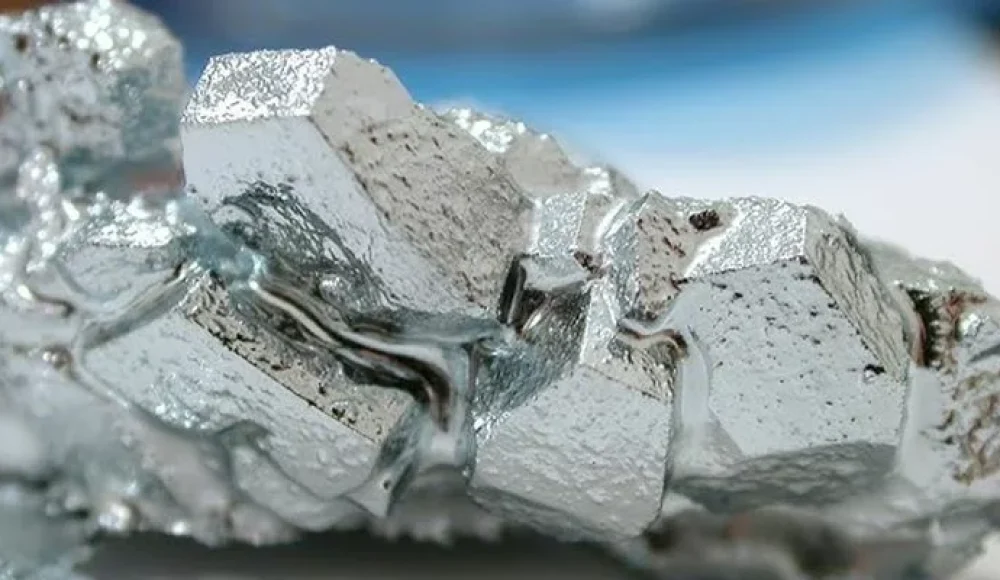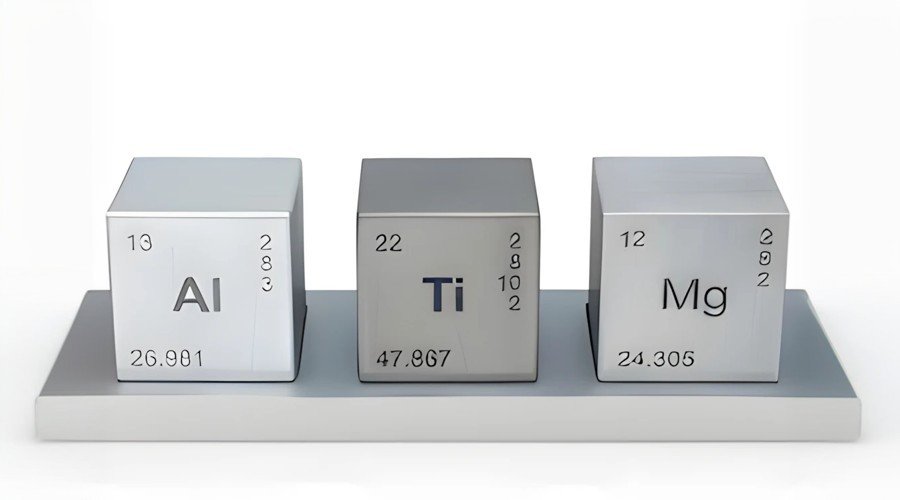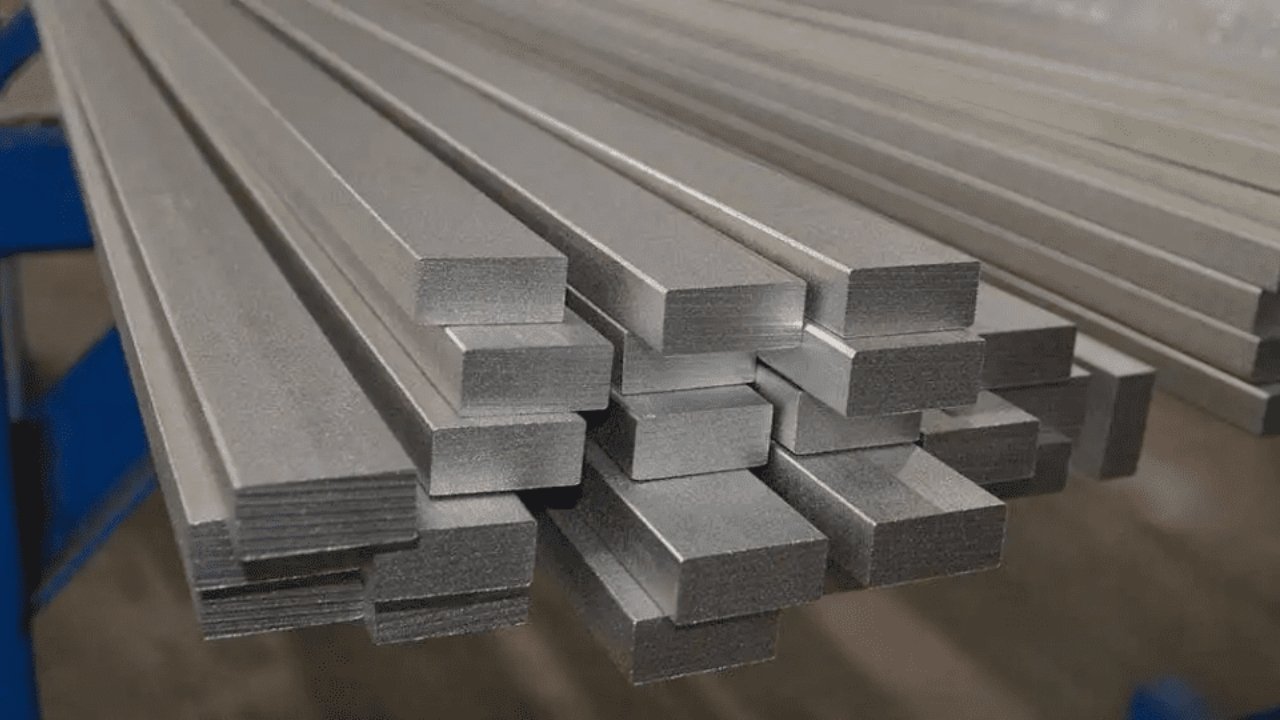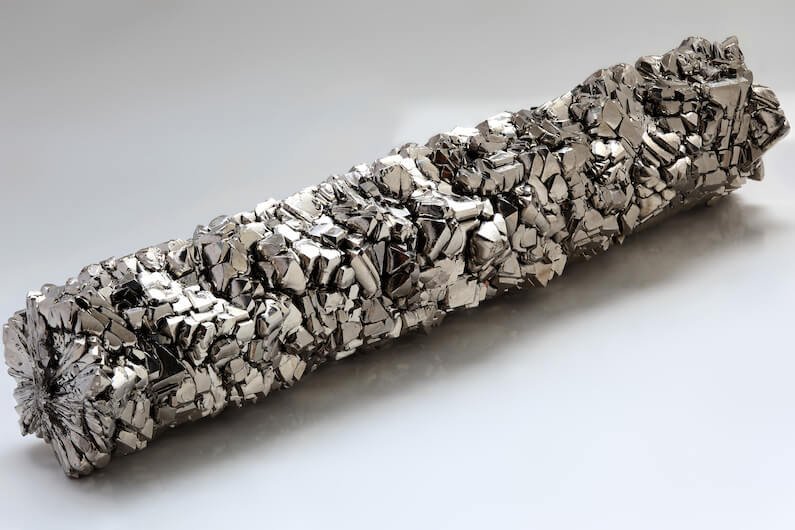Nel mondo manifatturiero in rapido movimento di oggi, the demand for materials that deliver strength without excess weight is higher than ever. Lightweight metals are at the forefront of this trend, making it possible to design products that are more fuel-efficient, energy-conscious, e più facile da produrre. From aerospace components to consumer electronics, these materials are shaping the way engineers and manufacturers think about product design.
This guide explores what lightweight metals are, their different types, key benefits, sfide, e applicazioni industriali.
What Are the Different Types of Lightweight Metals?
Lightweight metals are generally defined as metals with bassa densità but sufficient forza, durabilità, and resistance to serve in demanding environments. Below are the most widely used options.
1. Aluminum and Its Alloys
Densità: ~2.7 g/cm³ (about one-third that of steel).
Key properties: Elevata resistenza alla corrosione, eccellente macchinabilità, thermal and electrical conductivity.
Leghe:
6061 alluminio (magnesio + silicio) → strong, duttile, resistente alla corrosione.
7075 alluminio (zinc-based) → very strong, often used in aerospace and defense.
Manufacturing methods: Colata, estrusione, rotolamento, e lavorazione.
Applicazioni: Aircraft fuselages, parti automobilistiche, scambiatori di calore, lattine di bevande, and building materials.
Why aluminum?
It offers a great balance between cost, Riduzione del peso, e versatilità. It is also highly recyclable, making it both economical and sustainable.
2. Leghe di magnesio
Densità: ~1.7–1.8 g/cm³ (the lightest structural metal).
Key properties: Very low density, forza moderata, excellent vibration damping, Alta macchinabilità.
Limitazioni:
Can corrode if unprotected.
Produces combustible chips and dust during machining, requiring careful safety controls.
Applicazioni:
Automotive → engine blocks, alloggiamenti di trasmissione, ruote.
Consumer goods → laptops, cameras, cornici per biciclette, articoli sportivi.
Perché il magnesio?
It is the lightest structural metal, making it ideal where extreme weight reduction is needed. Tuttavia, additional coatings or alloying are often necessary to improve its corrosion resistance and durability.
3. Titanium and Its Alloys
Densità: ~4.5 g/cm³ (heavier than aluminum, but much stronger).
Key properties:
Exceptional corrosion resistance (especially in marine and chemical environments).
Elevato rapporto resistenza/peso.
Excellent performance at elevated temperatures (retains strength up to ~550 °C).
Sfide:
Difficult and expensive to machine due to hardness and low thermal conductivity.
High raw material cost.
Applicazioni:
Aerospace → jet engines, carrello di atterraggio, airframes.
Medical → implants, strumenti chirurgici.
Marine → offshore structures, ship components.
Why titanium?
Although heavier than aluminum, titanium’s superior strength and corrosion resistance make it a top choice for critical, high-performance applications where safety and durability are essential.
Comparison of Lightweight Metals
| Proprietà / Caratteristica | Alluminio | Magnesio | Titanio |
| Densità (g/cm³) | ~2.7 | ~1.7–1.8 | ~4.5 |
| Relative Weight | Medio (più leggero dell'acciaio) | Lightest structural metal | Heavier than aluminum, più leggero dell'acciaio |
| Rapporto resistenza-peso | Bene | Moderare | Eccellente |
| Resistenza alla corrosione | Alto (especially with coatings) | Low to moderate (needs protection) | Molto alto (especially in marine and chemical environments) |
| Lavorabilità | Bene, but needs cooling for thermal conductivity | Facile da lavorare, but dust is flammable | Difficult, requires special tools and cooling |
| Conduttività termica | Alto | Moderare | Basso |
| Riciclabilità | Eccellente | Bene | Limitato (energy-intensive to recycle) |
| Costo (Relative) | Basso (budget-friendly) | Da moderato ad alto | Alto (most expensive) |
| Applicazioni comuni | Settore automobilistico, aerospaziale, costruzione, elettronica | Parti automobilistiche, attrezzatura sportiva, alloggiamenti per l'elettronica | Aerospaziale, impianti medici, marino, difesa |
| Key Advantage | Cost-effective and versatile | Lightest weight | Strongest and most durable lightweight metal |
Why Choose Lightweight Metals for Your Projects?
Lightweight metals are not just about reducing weight; they offer a wide range of functional advantages.
Resistenza alla corrosione
Esempio: Titanium resists seawater corrosion, making it indispensable in marine engineering.
Durability and Sturdiness
Despite low weight, metals like magnesium and titanium can withstand heavy loads and harsh service conditions.
Elevato rapporto resistenza/peso
This property allows designers to reduce mass while maintaining or even improving strength.
Nel design automobilistico, lighter metals reduce fuel consumption and emissions.
Riciclabilità
Aluminum and magnesium can be recycled with minimal loss of properties, supporting circular manufacturing and reducing environmental footprint.
Proprietà termali
Aluminum has excellent thermal conductivity → useful in heat exchangers and electronics cooling.
Low thermal expansion helps maintain dimensional stability in high-temperature applications.
Important Considerations When Selecting Lightweight Metals
Choosing the right lightweight metal depends on multiple factors:
Mechanical and Thermal Properties
Aluminum → good machinability, alta conduttività.
Magnesium → extremely light, but requires protective coatings.
Titanium → strongest and most durable, ideal for high-stress and high-temperature environments.
Sustainability and Environmental Impact
Consider recyclability and carbon footprint.
Magnesium and aluminum are highly recyclable; titanium is energy-intensive to produce.
Vincoli di bilancio
Alluminio is generally the most cost-effective choice.
Magnesio is lightweight but more expensive to process safely.
Titanio is the most expensive but offers unmatched performance in specialized applications.
Requisiti dell'applicazione
Aerospace → prioritize strength and fatigue resistance (titanio, high-strength aluminum).
Automotive → balance between cost and weight reduction (alluminio, magnesio).
Electronics → lightweight and conductive (alluminio, magnesium alloys).
Challenges of Using Lightweight Metals
While lightweight metals provide clear advantages, manufacturers must manage several challenges:
Rifiuti materiali: Without precision machining, excessive scrap can drive up costs.
Machining Difficulty:
Titanium requires special tooling and cooling systems.
Magnesium machining must account for fire hazards.
Aluminum requires thermal management due to high conductivity.
High Raw Material Costs: Titanium and magnesium alloys can significantly raise overall project budgets.
Special Processing Needs: Rivestimenti, heat treatments, and protective layers add complexity and cost.
Applications of Lightweight Metals
Lightweight metals are indispensable across industries:
Aerospaziale: Aircraft fuselages, carrello di atterraggio, jet engine parts.
Settore automobilistico: Pannelli del corpo, ruote, engine components to improve fuel efficiency.
Medico: Surgical implants, protesi, e dispositivi medici.
Attrezzatura sportiva: Rackets, biciclette, helmets, performance gear.
Elettronica di consumo & 3C Products: Laptop, smartphone, cameras, and tripods.
Costruzione: Frame delle finestre, curtain walls, roofing materials.
Elettrico & Energia: Transmission lines (alluminio), battery housings, solar frames.
Marino: Offshore oil platforms, ship parts, componenti resistenti alla corrosione.
Future of Lightweight Materials
The future looks very bright for lightweight metals and materials. As industries like aerospace, settore automobilistico, and electronics continue to grow, the push for lighter, più forte, and more eco-friendly materials will only get stronger.
We’re already seeing big changes:
Electric cars need lightweight frames and battery housings to go farther on a single charge.
Airplanes are using more advanced aluminum, magnesio, and titanium alloys to save fuel and reduce emissions.
Elettronica di consumo like smartphones and laptops are becoming thinner and lighter without losing strength, thanks to new material designs.
Another exciting trend is the rise of composite materials (mixes of metals with carbon fiber, ceramica, or polymers). These often deliver even better performance than metals alone.
Inoltre, recycling technology is improving. In futuro, it will be easier and cheaper to reuse aluminum, magnesio, and even titanium. This means less waste, Costi inferiori, and greener production.
In termini semplici, the future of lightweight materials is all about:
Going lighter (for better efficiency).
Getting stronger (to handle tough conditions).
Becoming greener (through recycling and sustainable production).
COSÌ, whether you’re designing cars, aeroplani, or even medical devices, lightweight metals and materials are going to play a huge role in making products smarter, Più veloce, and better for the planet.
Conclusione
Lightweight metals are central to modern engineering, offering a combination of low density, forza, and durability that makes them invaluable across industries. Whether the goal is reducing fuel consumption in transportation, extending durability in harsh environments, or enhancing performance in consumer products, lightweight metals provide a competitive edge.
The choice between aluminum, magnesio, and titanium depends on bilancio, performance requirements, and sustainability goals. While challenges such as machining difficulties and high costs exist, the advantages of lightweight metals far outweigh their limitations.
Domande frequenti
- In what ways can lightweight metals affect your part design?
They allow for reduced material usage, more complex geometries, and improved design flexibility, all while maintaining structural integrity. - Which is lighter: aluminum or titanium?
Aluminum is lighter. Titanium is nearly twice as dense but offers superior strength. - Which lightweight metal is the cheapest and lightest for manufacturing?
Aluminum is the most affordable lightweight metal, while magnesium is the lightest structural metal.
Per saperne di più:
Link to our Servizi di lavorazione CNC
Suggerimenti per il design del casting
Forma Milling Essentials-Your Practical Guide






